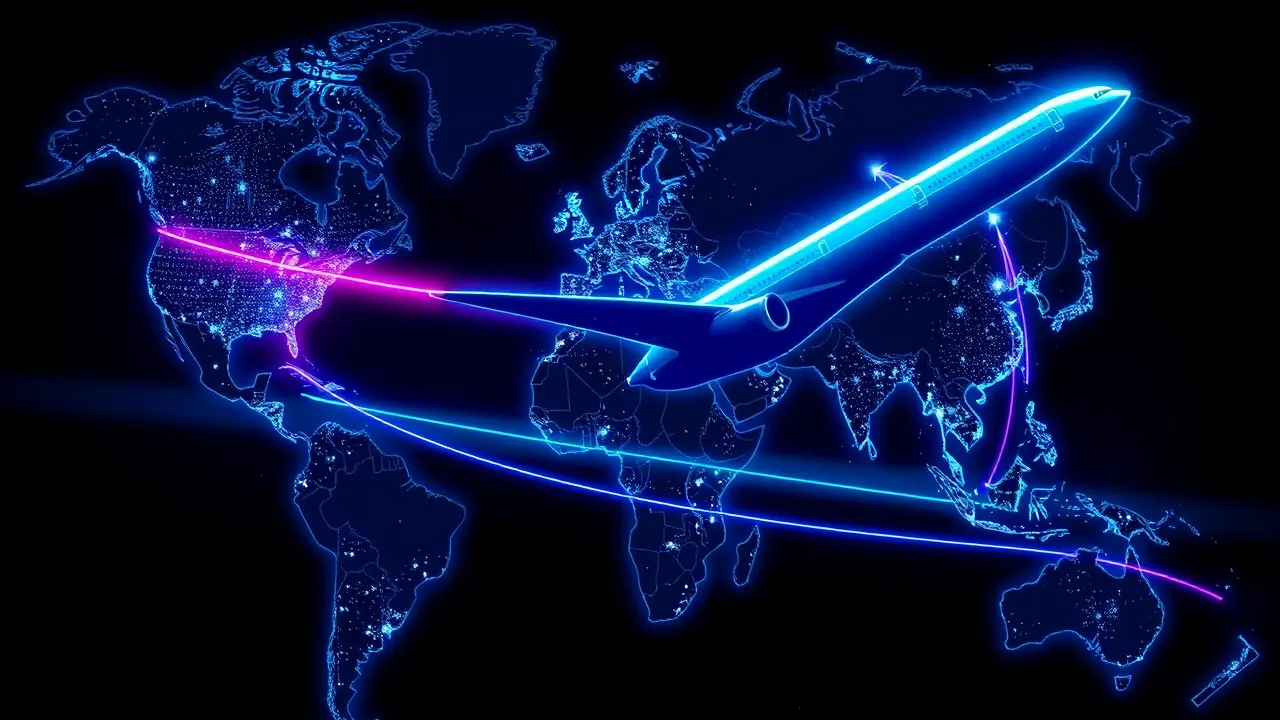Chinese Airlines Oppose US Plan to Ban Russian Airspace Flights
In a significant escalation of geopolitical tensions impacting global aviation, all major Chinese carriers operating routes to the United States have formally lodged objections with the U. S.Department of Transportation, vehemently opposing a proposed rule that could effectively ban them from traversing Russian airspace as early as next month. This move, spearheaded by Air China in a Tuesday filing which argued the change would severely inconvenience thousands of passengers—citing at least 4,400 ticketholders immediately affected—represents more than a mere regulatory dispute; it is a critical flashpoint in the ongoing economic and strategic fallout from the Ukraine conflict, forcing commercial entities into the heart of an international standoff.The core risk scenario, as analysts see it, involves a forced decoupling of East-West flight paths, compelling airlines to choose allegiances in a fragmented airspace map reminiscent of Cold War divisions, where Russian skies have remained open to Chinese and some other non-Western carriers while being closed to U. S.and EU operators since 2022. This has granted Chinese airlines a substantial competitive advantage on key U.S. -Asia routes, notably to cities like New York and San Francisco, where flight times can be up to three hours shorter and fuel costs significantly lower compared to their American counterparts who must take longer, more expensive southern detours.The U. S.proposal, ostensibly framed around safety concerns and preventing Russian overflight fees from bolstering its war economy, is widely interpreted as a strategic gambit to level the competitive playing field and exert economic pressure on Beijing, effectively weaponizing aviation policy. However, the potential consequences are fraught with risk: a unilateral U.S. ban could trigger retaliatory measures from China, potentially restricting American cargo and passenger flights over its vast territory, which would wreak havoc on global supply chains and international travel logistics already strained by pandemic-era disruptions.The historical precedent is stark; the 2014 downing of Malaysia Airlines Flight 17 over eastern Ukraine demonstrated the catastrophic human cost of political conflict spilling into civilian air corridors, yet the current scenario involves a calculated economic confrontation rather than an immediate safety threat. Expert commentary suggests that while the U.S. holds considerable leverage through access to its lucrative market, China's position as a global aviation powerhouse and its strategic partnership with Russia means it is unlikely to capitulate without a fight, potentially leading to a protracted dispute at the International Civil Aviation Organization (ICAO) and further Balkanization of global air travel norms.The broader context reveals a world increasingly dividing into spheres of influence, where infrastructure as fundamental as flight paths becomes a tool of statecraft, and the very concept of a seamlessly connected globe is under threat. For risk analysts, this development signals a high-probability scenario of escalating tit-for-tat measures, where the initial operational disruptions could cascade into higher ticket prices, reduced flight frequencies, and a fundamental re-routing of global aviation maps, ultimately harming consumers and businesses in both nations while deepening the technological and logistical schism between aligned and non-aligned states in a new era of geopolitical contestation.
Latest News
The charts are whispering what the true believers have felt in their bones for weeks—Dogecoin is carving out a bottom.
17 hours ago5 comments
The Institute for Fiscal Studies has thrown a stark warning onto Rachel Reeves's desk, urging the Chancellor to confront a potential £22 billion shortfall in
17 hours ago3 comments
Alright, let's break down this absolute heater of a performance from the Chicago Blackhawks, because if you missed this one, you missed a party.
18 hours ago5 comments
The ice was hot last night in the NHL, folks, serving up a slate of games that felt less like a regular season Tuesday and more like a playoff preview with a
18 hours ago3 comments
The XRP chart is painting a tantalizing picture for those with the stomach to withstand the relentless pressure from crypto's leviathans.
18 hours ago4 comments
It’s in the small shifts, the quiet recalibrations of a Thursday morning, where the most meaningful change often takes root.
18 hours ago4 comments
In a move that sent ripples of quiet confidence through the crypto ecosystem, blockchain intelligence firms tracked a monumental treasury allocation from
18 hours ago4 comments
In a move that would have drawn a nod of approval from historical figures like Churchill, who understood the delicate balance of power within democratic
18 hours ago2 comments
CH
Chloe Miller123k4 hours ago
this feels like it's just going to make everything more expensive for everyone smh what do you guys think will actually happen
0
JA
Jamie Larson123k5 hours ago
major development in the space tbh this feels like its just gonna make everything more expensive for everyone smh
0
JA
Jamie Larson123k6 hours ago
the algorithm is gonna love this drama but idk feels like everything is just getting more complicated for no reason
0
JA
Jamie Larson123k9 hours ago
wait so this could make flights even more expensive tbh smh
0
CH
Chloe Bennett123k10 hours ago
ugh i just feel for all the passengers caught in the middle of this it's so frustrating when politics messes with people's lives like that
0
JA
Jamie Larson123k11 hours ago
major development in the space tbh this is just gonna make everything more expensive for everyone smh
0
JA
Jamie Larson123k11 hours ago
this just feels like passengers becoming political pawns smh idk where this ends
0
JA
Jamie Wilson123k17 hours ago
smh this feels like it's just gonna make everything more expensive for everyone idk why they can't figure this out
0
